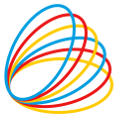Astrometry is transversal to Astronomy. Thanks to increased levels of precision and accuracy it can probe and provide keys to understand dark matter, to reveal planetary system architectures, to empower studies of gravity, of the behavior of matter in compact objects and to determine the Hubble constant to unprecedented accuracies.
At the commemorations of IAU 100th anniversary, just after the Gaia DR2 and with the excitement of future mission proposals and ground infrastructures, the IAU348 Symposium aims to join different communities to foster bridges: bridges that may allow different communities to address together some of the most profound questions of modern science. What is dark matter? Is there life elsewhere in the Universe?
Topics included
- Dwarf Galaxies: internal dynamics of Milky Way companions;
- HVS: probing the triaxiality of the Milky Way DM Halo;
- Disk perturbations due to DM clumps;
- Exoplanet detection: from long period Jupiters to Habitable Exo-earths;
- Exoplanet characterisation: dynamics, chaos and orbital determination;
- Astrometric signatures of Black Holes: microlensing, shadows, hot-spots, and gravitational effects;
- Equation of state of NS: probing the most extreme states of matter;
- Trigonometric parallaxes for H0 determination: Cepheids, RR-Lyraes and other steps of the distance ladder;
- New astrometric instruments and technologies: space mission concepts and ground based astrometry in the age of the ELTs;
- Modern Statistical Methods for astrophysical information extraction from Astrometric data: signal processing, bayesian methods, machine-learning, optimization strategies.
Confirmed invited speakers
- Laura Watkins, USA – Dwarf galaxies
- Alexandre Correia, Portugal – Extrasolar planets dynamics
- David Bennett, USA – Masses of extrasolar planets
- Elena Rossi, Netherlands – Hypervelocity stars
- Lukasz Wyrzykowski, Poland – Black holes
- Micaela Oertel, France – Compact objects
- Stefano Casertano, USA – Parallaxes and H0
- Anthony Brown, Netherlands – ESA/Gaia and the Gaia mission extension
- Joss Bland-Hawthorn, Australia – Near-field cosmology
- Rafael de Souza, USA – Modern statistical methods
Scientific Organizing Committee
- Alain Leger, CNRS/IAS, France (co-chair)
- Alessandro Sozzetti, INAF Torino, Italy (co-chair)
- Alberto Krone-Martins, CENTRA Universidade de Lisboa, Portugal (co-chair)
- Celine Boehm, Sydney University, Australia (co-chair)
- Anne Lemaître, Université de Namur, Belgium
- Barbara McArthur, University of Texas Austin, USA
- Catherine Turon, Observatoire de Paris Meudon, France
- David Spergel, Simons Center for Comp. Astrophysics & Princeton University, USA
- François Mignard, Observatoire de la Côte d’Azur, France
- Jill Tarter, SETI Institute, USA
- John Tomsick, University of California, Berkeley, USA
- Mariateresa Crosta, INAF Osservatorio Astrofisico di Torino, Italy
- Norio Narita, National Astronomical Observatory of Japan, Japan
- Torsten Ensslin, Max-Planck-Institut für Astrophysik, Germany
- Yanxia Zhang, NAO Chinese Academy of Sciences, China
